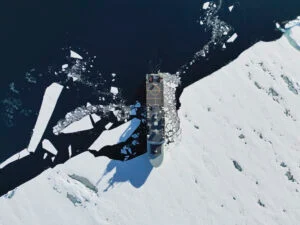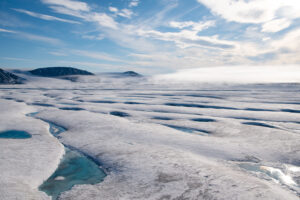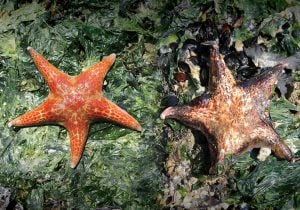
People & Culture
On thin ice: Who “owns” the Arctic?
As the climate heats up, so do talks over land ownership in the Arctic. What does Canadian Arctic Sovereignty look like as the ice melts?
- 4353 words
- 18 minutes
Exploration
From sea ice to ocean currents, Svalbard has a unique yet fragile environment that may look very different as climate change shifts weather patterns

If you ask a Svalbard local what they most look forward to each year, you might be surprised by the answer. In Longyearbyen, the northernmost year-round settlement on Earth, many people eagerly anticipate the polar nights that pitch the Arctic archipelago into darkness. These long, dark winters have a way of bringing the community closer together. For nearly four months (the dark period starts at the end of October and doesn’t end until mid-February) the town of Longyearbyen appears as a string of lights in a frozen river valley along Advent Fiord.
Located far north of the Arctic Circle, at 78 degrees north, Svalbard’s glaciers, wildlife and rugged Arctic terrain draw explorers, scientists and tourists from all over the world and at all times of the year. One such pair of adventurers, Sunniva Sorby and Hilde Fålun Strøm, launched their nine-month Hearts in the Ice (HITI) project with the ambitious goal of overwintering in a remote hunter’s cabin (called Bamsebu) on the shore of Svalbard’s Van Keulen Fiord. They are halfway through their stay and are busy gathering environmental data and performing other research as part of citizen science projects for organizations such as NASA and the Norwegian Polar Institute.
“We are in total darkness here at Bamsebu,” Sorby and Strøm wrote in their weekly log in mid-January. “Dark, save for the brilliant display of the night sky, fast-moving satellites, shootings stars and those many magical auroral displays that feel like they shine just for us.”
Likewise, there is no doubt that Svalbard’s climate, which paints the landscape in broad strokes of ice, snow and dramatic skies, inspires anyone who visits. The archipelago is considered subpolar because of its proximity to the North Pole, about 1,300 kilometres away. Such climates experience long, cold winters and cool, mild summers.
In the winter, Svalbard’s temperatures can dip to -30 C, while summers rarely break 10 C. Nevertheless, that is considered relatively warm for the latitude, and is due to the West Spitsbergen Current (a branch of the Gulf Stream) bringing warmer waters from the south and moderating the climate. The opposite happens in the north of the archipelago, with the East Spitsbergen Current pulling in cold Arctic waters. When these two currents mix in the Barents Sea, fog is a common sight. Svalbard doesn’t get much precipitation, except in the form of snow during the colder months.
Those who visited Svalbard only a decade ago, however, might not recognize it today. With the Arctic warming twice as fast as the rest of the planet, Svalbard is undergoing changes that are impacting its wildlife, landscapes, ocean, glaciers and urban settlements.

Svalbard’s winters have been steadily getting warmer. Over the past five decades, the average annual air temperature rose between 3 C and 5 C. Surrounding ocean temperatures are also warming. The Gulf Stream brings warmer waters from the Atlantic Ocean to the Arctic, which contributes to melting sea ice along Svalbard’s shores.
The weaker and more unpredictable sea ice conditions have widespread effects for marine wildlife. Polar bears have been observed engaging in unusual hunting habits. The shrinking sea ice affects the bears’ ability to catch seals surfacing for air at breathing holes. Instead, bears are resorting to stalking and ambushing prey, which requires more of their energy.
Svalbard’s climate is not only getting warmer but also wetter. More and more rain has been recorded during the wintertime. This precipitation freezes, creating a layer of ice over the snow and making it difficult for species such as Svalbard reindeer to get at the vegetation beneath. Ice build-up on land has also caused serious issues for Svalbard’s urban settlements, with an avalanche in Longyearbyen killing two people in 2015.

These issues will only worsen, according to the Climate in Svalbard 2100 report by the Norwegian Centre for Climate Services:
TEMPERATURE: By the end of the century, temperatures are expected to rise between 7 C and 10 C.
PRECIPITATION: Rainfall will continue to increase, becoming more intense and frequent. This will to lead to flooding as well as more landslides and avalanches.
GLACIERS: All of Svalbard’s glaciers are melting and calving faster than they’re accumulating snow and ice. The loss of glacier mass is projected to increase five-fold by 2100, which will contribute to sea-level rise.
OCEAN: Ocean temperatures have been warming since the 1970s and the trend is expected to continue. The West Spitsbergen Current brings warmer Atlantic waters to the Barents Sea and scientists have nicknamed this an “Arctic warming hotspot.”
SEA ICE: The warmer ocean and air temperatures have resulted in the decline of sea ice formation around Svalbard. In fact, many fiords around Svalbard are being reported as ice-free for longer and longer each year.

Are you passionate about Canadian geography?
You can support Canadian Geographic in 3 ways:

People & Culture
As the climate heats up, so do talks over land ownership in the Arctic. What does Canadian Arctic Sovereignty look like as the ice melts?

Environment
The uncertainty and change that's currently disrupting the region dominated the annual meeting's agenda

Environment
What the collapse of the Milne ice shelf and the loss of a rare Arctic ecosystem might teach us about a changing planet

Environment
As the impacts of global warming become increasingly evident, the connections to biodiversity loss are hard to ignore. Can this fall’s two key international climate conferences point us to a nature-positive future?